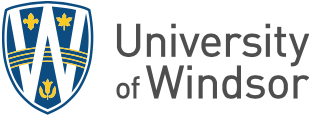What are Indigenous Protocols?
What are Indigenous Protocols?
You may have heard the term protocol in relation to working with Indigenous people. The term protocol includes many things, but overall it refers to ways of interacting with Indigenous people in a manner that respects traditional ways of being. Protocols are not just “manners” or “rules” – they are a representation of a culture’s deeply held ethical system. They also have highly practical applications that may have arisen in a pre-contact context but still apply today. Protocols differ vastly from one Indigenous culture or community to another, and they can be highly complex and multi-layered. Coming to understand and practice protocols appropriately is a lifelong learning process even for Indigenous people growing up within their culture. Following protocols is a significant sign of respect and awareness. It shows that you are taking the time to learn about Indigenous cultures and are challenging the often unconscious bias that everyone should interact in the way that mainstream settler culture dictates. Through following protocols, you can build stronger relationships with Indigenous communities and learn about different ways of interacting.
There are 6 Indigenous protocols common to this area:
- Land Acknowledgement
- Elder Protocol
- Smudge Protocol
- Talking Stick Protocol
- Feasts and Giveaways Protocol
- Pow Wow Protocol
Adapted from Respecting Protocols from Pulling Together: A Guide for Curriculum Developers.
Elder Protocols
An Indigenous Elder is someone who has lived and continues to live in a cultural way and uses a traditional lens to engage with people. The term “Elder” is not an Indigenous word – it comes from interaction with the Christian church. Indigenous languages have other words to connote this role, such as “wisdom-keeper” (In conversation, Leslie McGarry , 2016 ). Elders play a role of keeping traditional wisdom alive and passing it forward. Although an Elder is usually an older person, not all older people carry the title of Elder, and in some cases Elders can be quite young.
If you invite an Elder to your classroom there are protocols, you should be aware of:
- Accessibility
- Assistance
- Food and Beverages
- Honorarium
Approaching a Traditional Healer Elder or Medicine Person
Anishnawbe Health Toronto has created a document which goes into some detail about approaching a traditional healer elder or medicine person. This document is one of many you can find on their website that pertains to traditional teachings.
Whose land am I on?
Whose Land is a web-based app that uses GIS technology to assist users in identifying Indigenous Nations, territories, and Indigenous communities across Canada. The app can be used for learning about the territory your home or business is situated on, finding information for a land acknowledgement, and learning about the treaties and agreements signed across Canada. Educational videos are available to watch that will give you a better understanding of why land acknowledgements are important, and the way Indigenous people view their relationship to land. The app consists of six different maps of Indigenous territories, Treaties, and First Nations, Inuit, and Metis communities. Each community's location will eventually host a land acknowledgement video, and other information that the community would like to include on their page. The app will be used as an educational tool to create dialogue around reconciliation. It will be a starting point for conversation between Indigenous and non-Indigenous citizens across this country about land, territorial recognition and land acknowledgement.
Adapted from Whose Land.
Map Room - Government of Canada - Find a map or geospatial dataset about Indigenous communities or the North. The maps are available as web-based interactive maps or static maps that can be downloaded and printed.
Land Acknowledgements
Territorial Acknowledgements: Going Beyond the Script
Have you ever wondered how to create your own territorial acknowledgement, or why you might want to create one? With help and guidance from University of Alberta faculty and staff you, too, can create personal, meaningful, and impactful territorial acknowledgements. Watch the full length video.
Ojibwe Clan System
In this WBC video Joel shares a Teaching about the Ojibwe Clan System. Enjoy!
